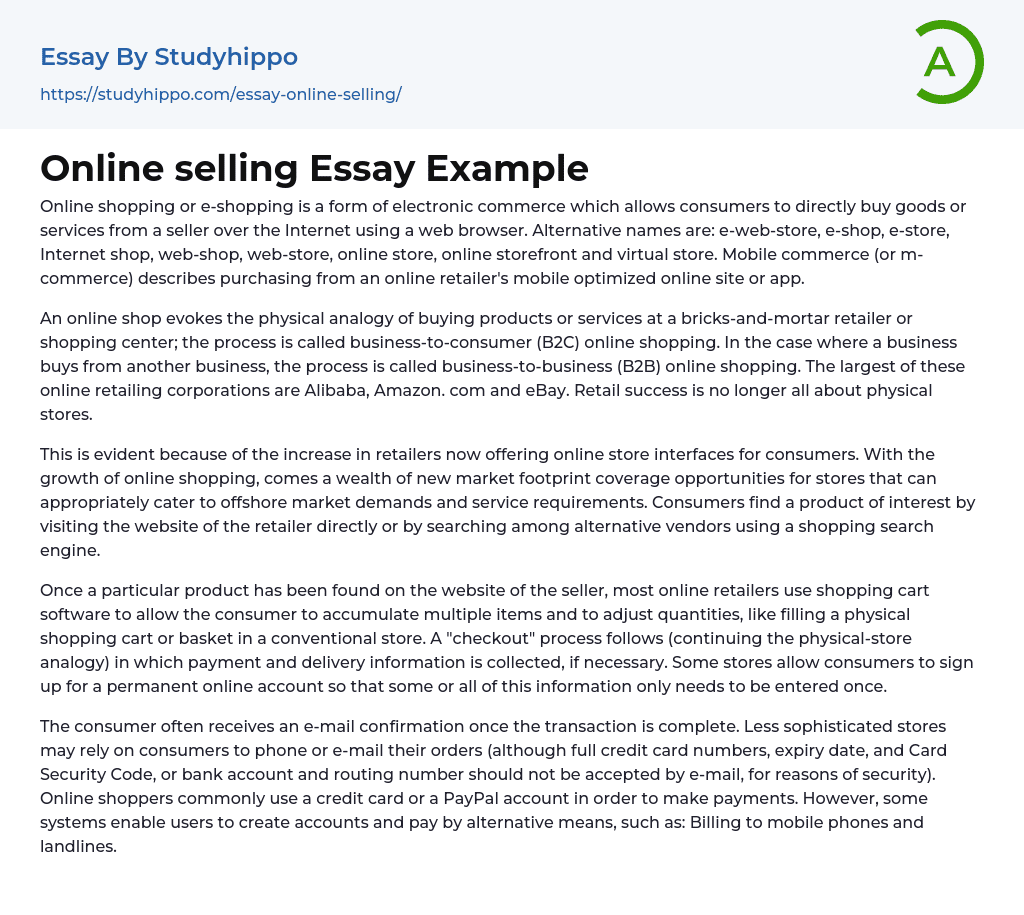Online shopping or e-shopping is a form of electronic commerce which allows consumers to directly buy goods or services from a seller over the Internet using a web browser. Alternative names are: e-web-store, e-shop, e-store, Internet shop, web-shop, web-store, online store, online storefront and virtual store. Mobile commerce (or m-commerce) describes purchasing from an online retailer's mobile optimized online site or app.
An online shop evokes the physical analogy of buying products or services at a bricks-and-mortar retailer or shopping center; the process is called business-to-consumer (B2C) online shopping. In the case where a business buys from another business, the process is called business-to-business (B2B) online shopping. The largest of these online retailing corporations are Alibaba, Amazon. com and eBay. Retail success is no longer all about physical stores.
-align: justify">This is evident because of the increase in retailers now offering online store interfaces for consumers. With the growth of online shopping, comes a wealth of new market footprint coverage opportunities for stores that can appropriately cater to offshore market demands and service requirements. Consumers find a product of interest by visiting the website of the retailer directly or by searching among alternative vendors using a shopping search engine.
Once a particular product has been found on the website of the seller, most online retailers use shopping cart software to allow the consumer to accumulate multiple items and to adjust quantities, like filling a physical shopping cart or basket in a conventional store. A "checkout" process follows (continuing the physical-store analogy) in which payment and delivery information is collected, if necessary. Some stores allow consumers to sign up for a permanen
online account so that some or all of this information only needs to be entered once.
The consumer often receives an e-mail confirmation once the transaction is complete. Less sophisticated stores may rely on consumers to phone or e-mail their orders (although full credit card numbers, expiry date, and Card Security Code, or bank account and routing number should not be accepted by e-mail, for reasons of security). Online shoppers commonly use a credit card or a PayPal account in order to make payments. However, some systems enable users to create accounts and pay by alternative means, such as: Billing to mobile phones and landlines.
- Futures Contract essays
- Mortgage Loan essays
- Renting essays
- Transaction Cost essays
- Advertising essays
- Audience Theory essays
- Competitor Analysis essays
- Consumer essays
- Marketing Management essays
- Marketing Mix essays
- Marketing Plan essays
- Marketing Research essays
- Marketing Strategy essays
- Point Of Sale essays
- Price essays
- Procurement essays
- Product essays
- Product Differentiation essays
- Promotion essays
- Promotion And Marketing Communications essays
- Retailing essays
- Trademark essays
- Anheuser-busch essays
- Brands essays
- Detergent essays
- Product Placement essays
- Research Design essays
- New Product Development essays
- Advertisement essays
- Brand essays
- Sales Promotion essays
- Advertising campaign essays
- Consumer behaviour essays
- Offer And Acceptance essays
- Wal-Mart essays
- Discover essays
- Buying Homes essays
- Cloud Computing essays
- Computer Science essays
- Consumer Electronics essays
- Data Analysis essays
- Electronics essays
- engineering essays
- Enterprise Technology essays
- Hardware essays
- Impact of Technology essays
- Information Age essays
- Information Technology essays
- Modern Technology essays
- Operating Systems essays




